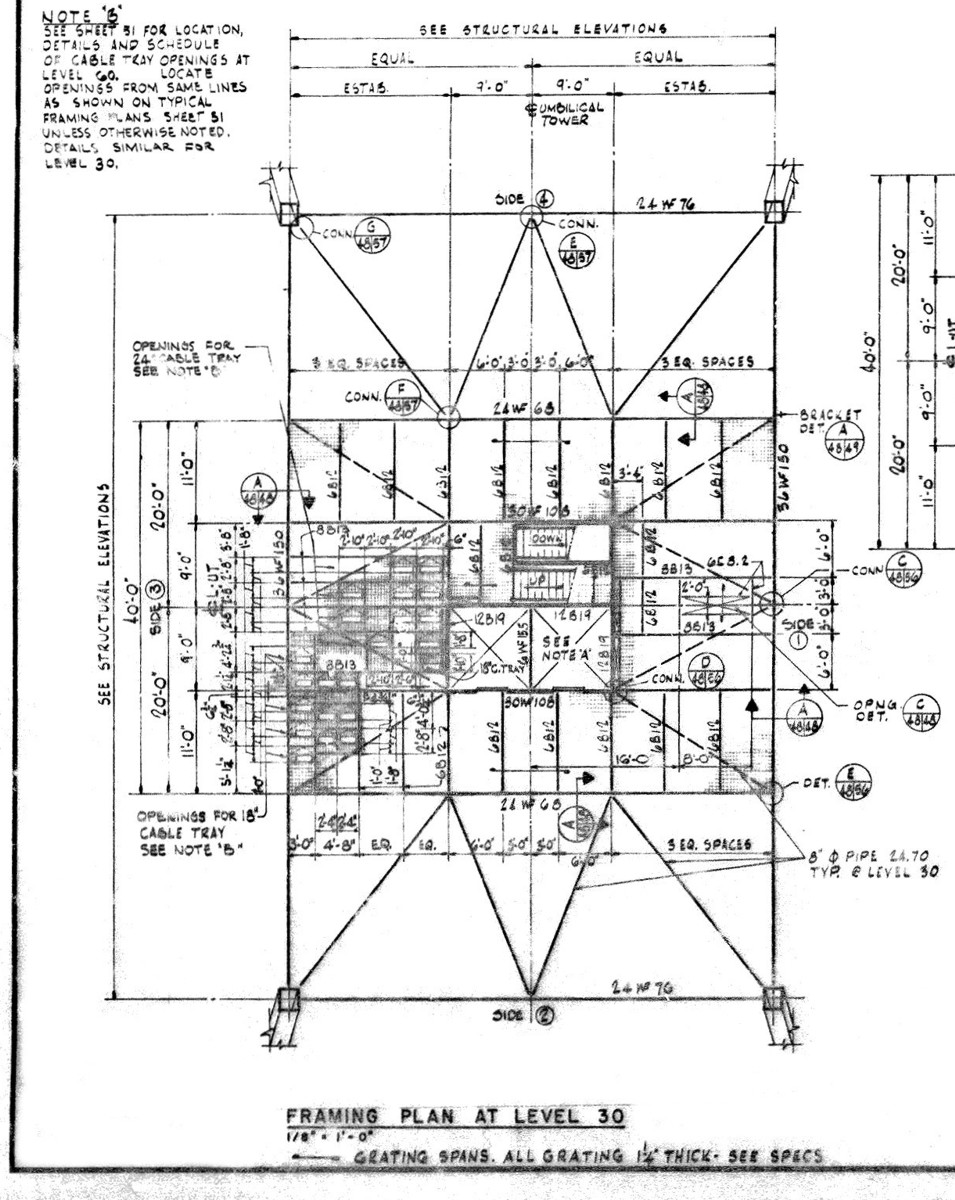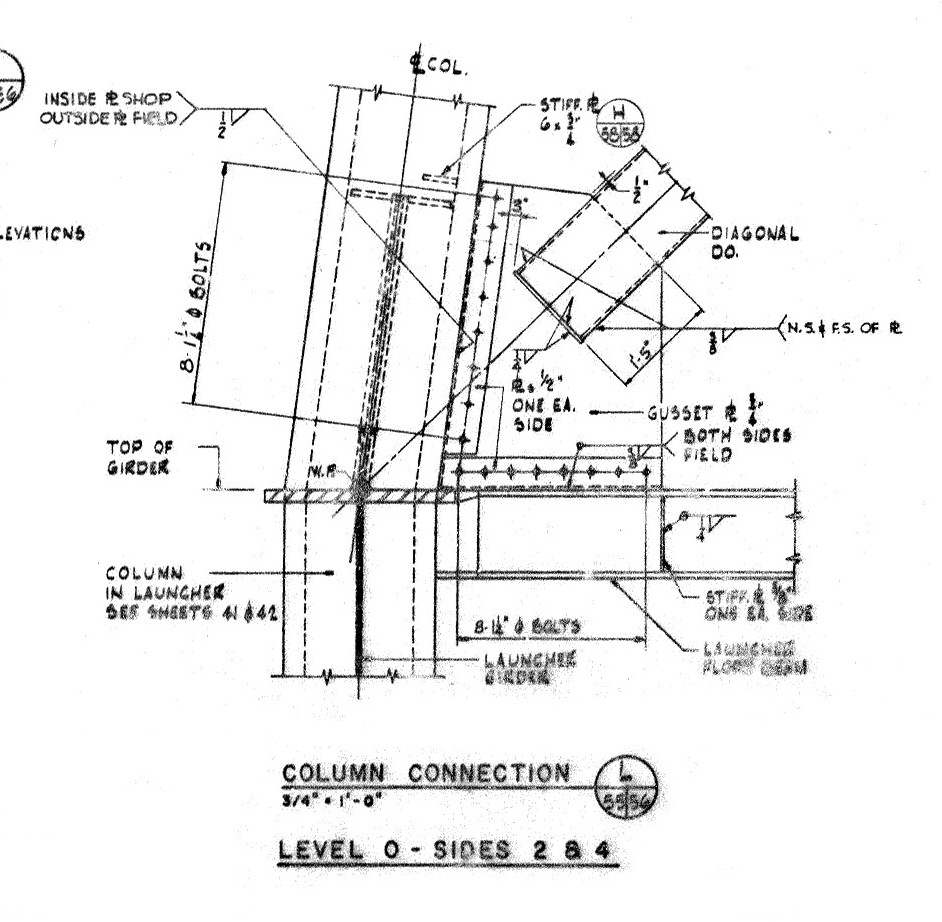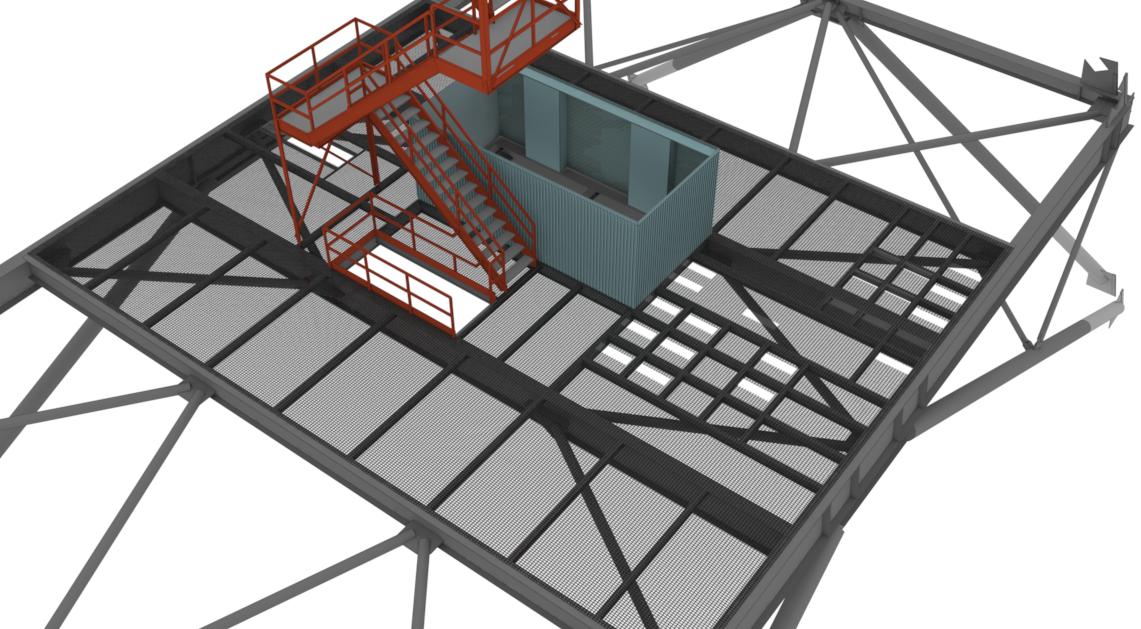Intermezzo - the blueprints
- Mischa
- LUT model
I'm often asked, where I get my plans and blueprints from, how many they are, and how I use them. Here a short answer.
Basically, the plans of the entire moon landing project are organized in collections. The 'bible' for the LUT is collection 75M-05120, which describes the structural design (without the service arms), and collection 75M-05121, which is responsible for the installation details, i.e. piping, electrics, etc. In addition, there are countless other collections for details, custom-made products and additions. 75M-5120 consists of 78 sheets, 75M-5121 of 296 sheets.
There are usually 6-8 areas (a-h) on one sheet. Here is a typical example (75M-5120 Sheet 48 Area E, bottom left):

Framing plan at LUT Level 30
Here we see level 30, the first 'floor' of the LUT. The floors are simply named after their height, so level 30 is 30 feet above 0, where '0' means the deck of the MLP.
Standard beams are used for the framework, named after their configuration at the American Institute of Steel Construction (AISC). For example, '24 WF 68' is an H beam (WF = wide flange) which is 23.73" high and 8.965" wide and is made of 0.585" thick steel. So if you don't have the AISC handbook from 1960, you can't even start ;)
The phrase 'see structural elevations is a reference to the elevation plans, i.e. the front- and side views, however you may calculate the dimensions also for yourself - the LUT has a pyramid shape at the base, and the side measures at 30 feet height are something for your slide rule.
The circles with the letters and numbers (e.g. E 48/57) are cross-references and tell you, on which sheet and in which area you find the corresponding detail (here for example. the connection between steel beam and columns) - in principle a hyperlink ;)

Column connection at LUT Level 0
And this is how a corresponding detail looks like. The only dimensions are the 3" distance between stud plate and column insert, as well as its depth of 1'5" + 0,5" welding distance. So you have to find out the width of the stud plate, which in turn depends on the size of the borehole, and you will find the rules in the AISC again. So before you have even drawn a single line in Rhino, you usually have to consult numerous plans and references and calculate diligently.



